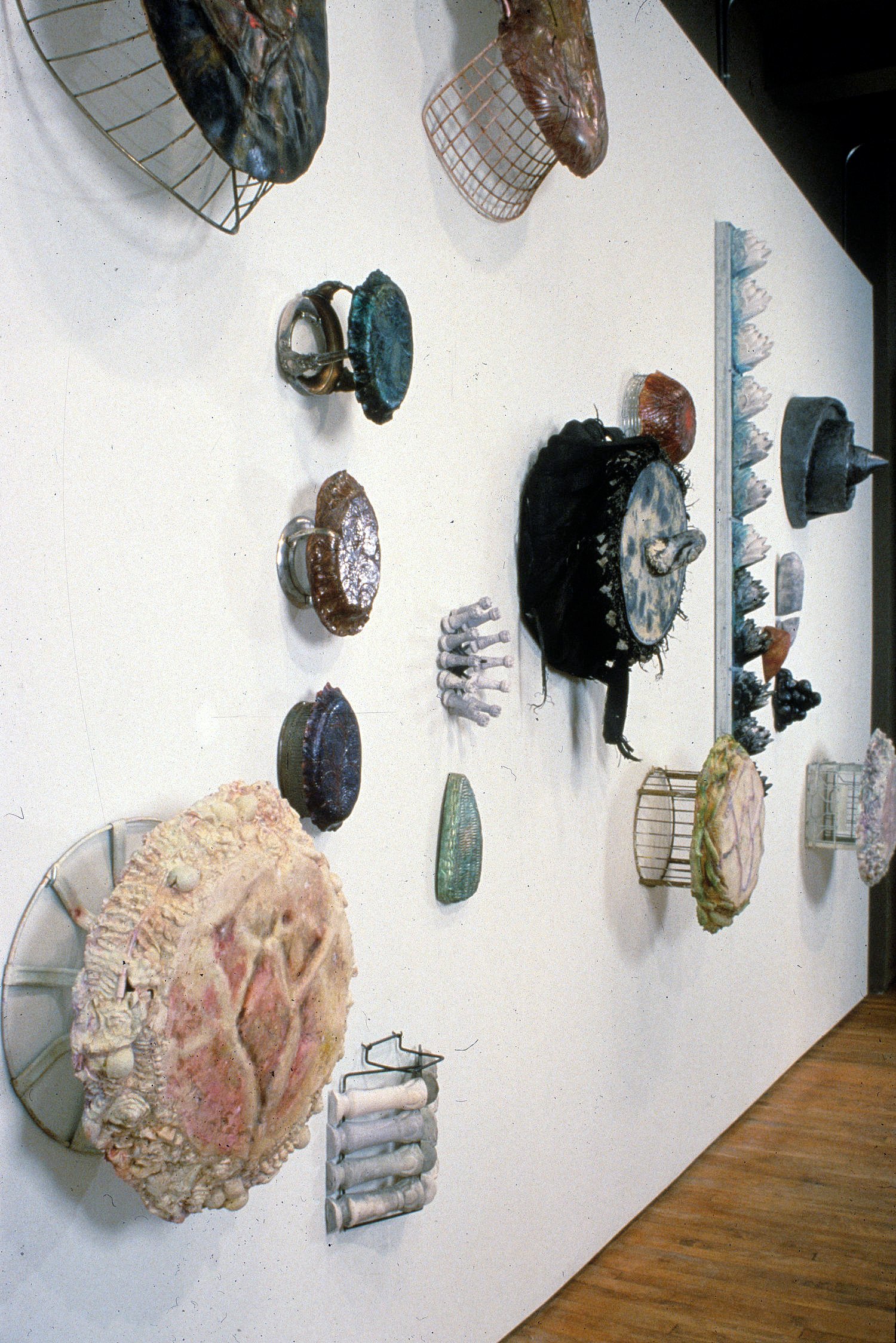La Belle Époque
La Belle Époque draws attention to the things we collect and how they reflect our identities. It’s not just about tchotchkes or trinkets but something deeper — the flesh as a souvenir of experience, a tangible representation of memory or desire. The corporeal hybrids become trophies in a culture obsessed with possession and display; spoofs on consumerism, blending the personal with the material, and challenging the way we perceive value in both our bodies and the objects around us.
Installation view, Akin Gallery, Boston, MA, 1991
La Belle Époque Shield, Mixed media, 1991
La Belle Époque Egg, Mixed media, 1991
La Belle Époque Architecture I, Mixed media, 1991
La Belle Époque Tire Swan, Mixed media, 1991
"In this show, titled La Belle Epoque, Haberl forged a collection of mysterious objects that realized her striking vision without trying to make a seamless tapestry of the different components. Each piece has a strength that keeps it from requiring any conceptual buttressing through references to accompanying works; at the same time, the ensemble has a coherence and unity of intention.
...
Haberl's works refuse referentiality, and with a few exceptions (the shapes of chessmen and a number of barely identifiable press-on letters and symbols), overt representational traces have been effaced. In several pieces, including two columnar ones, a slablike, thickened wing motif is repetitively employed. These wings are encrusted so that they also resemble hands or even leaf clusters. This overlay of possible references produces a very strong effect.
The unforced connections between the different pieces effectively stymied any attempt to discern a common theme or to regard the work in serial fashion. The exhibition called to mind the 'iceberg' theory of art first formulated by Ernest Hemingway: as long as the artist is fully aware of what is left out, the 90 percent of the work 'under the surface' will resonate in the portion that is visible more strongly than if it were actually there. In any case, there's nothing missing in any way from Haberl's fine pieces. The assurance of her work added a delightful charge and glow to this assembly."
—Thomas Frick, Art in America, June 1991

Installation view, Akin Gallery, Boston, MA, 1991




